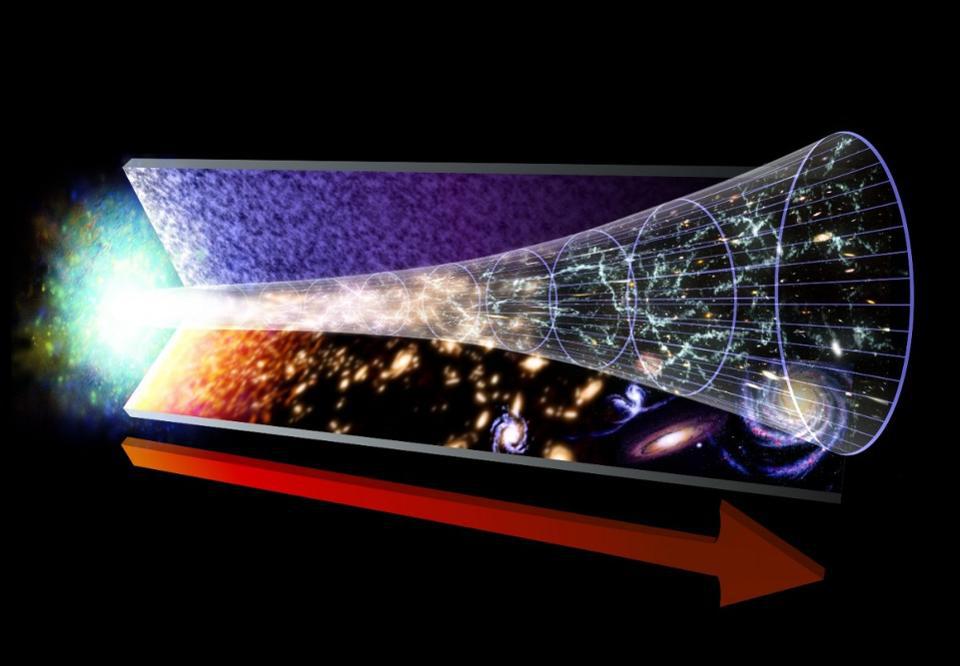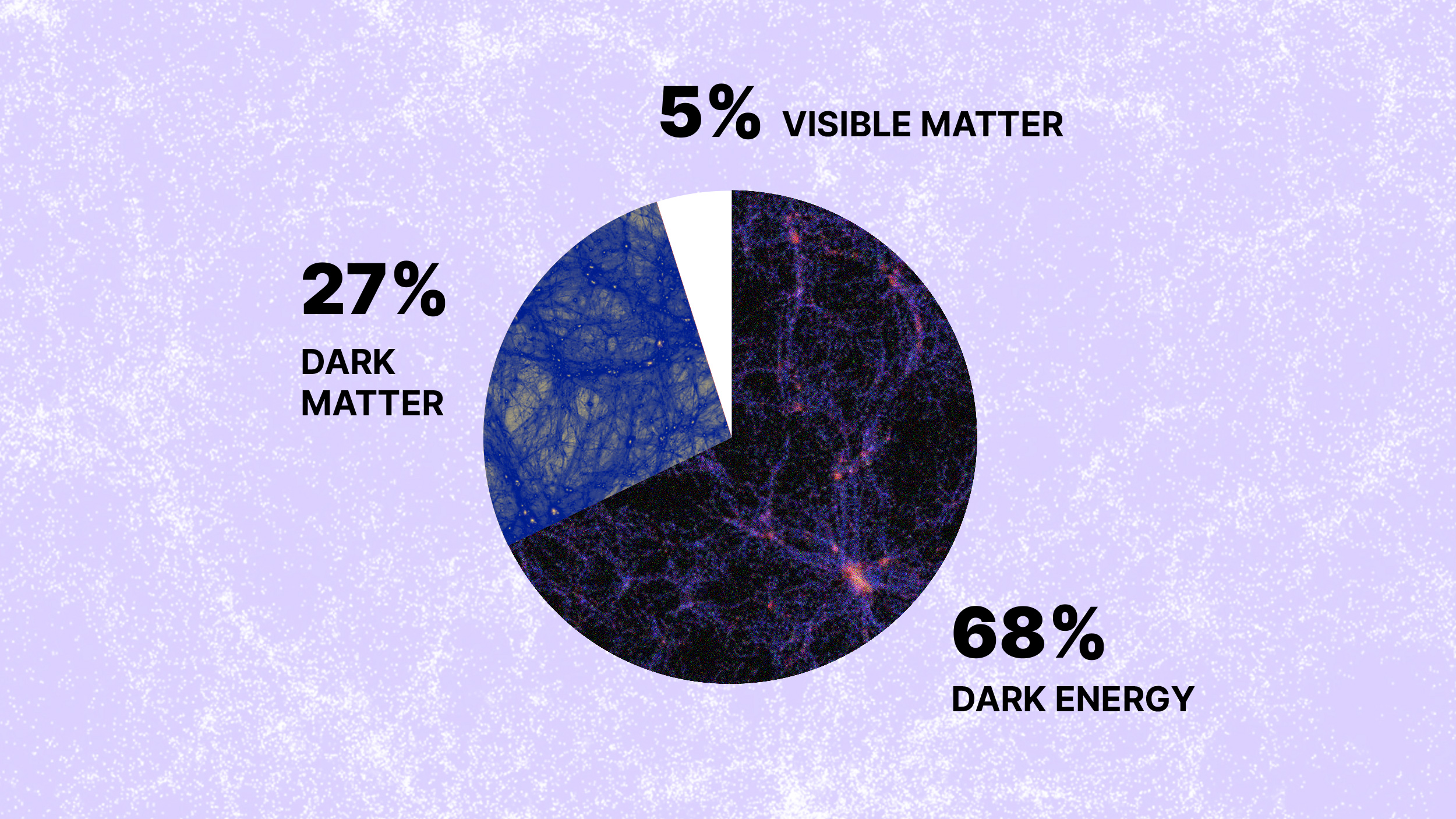How quickly is the Universe disappearing from our reach?
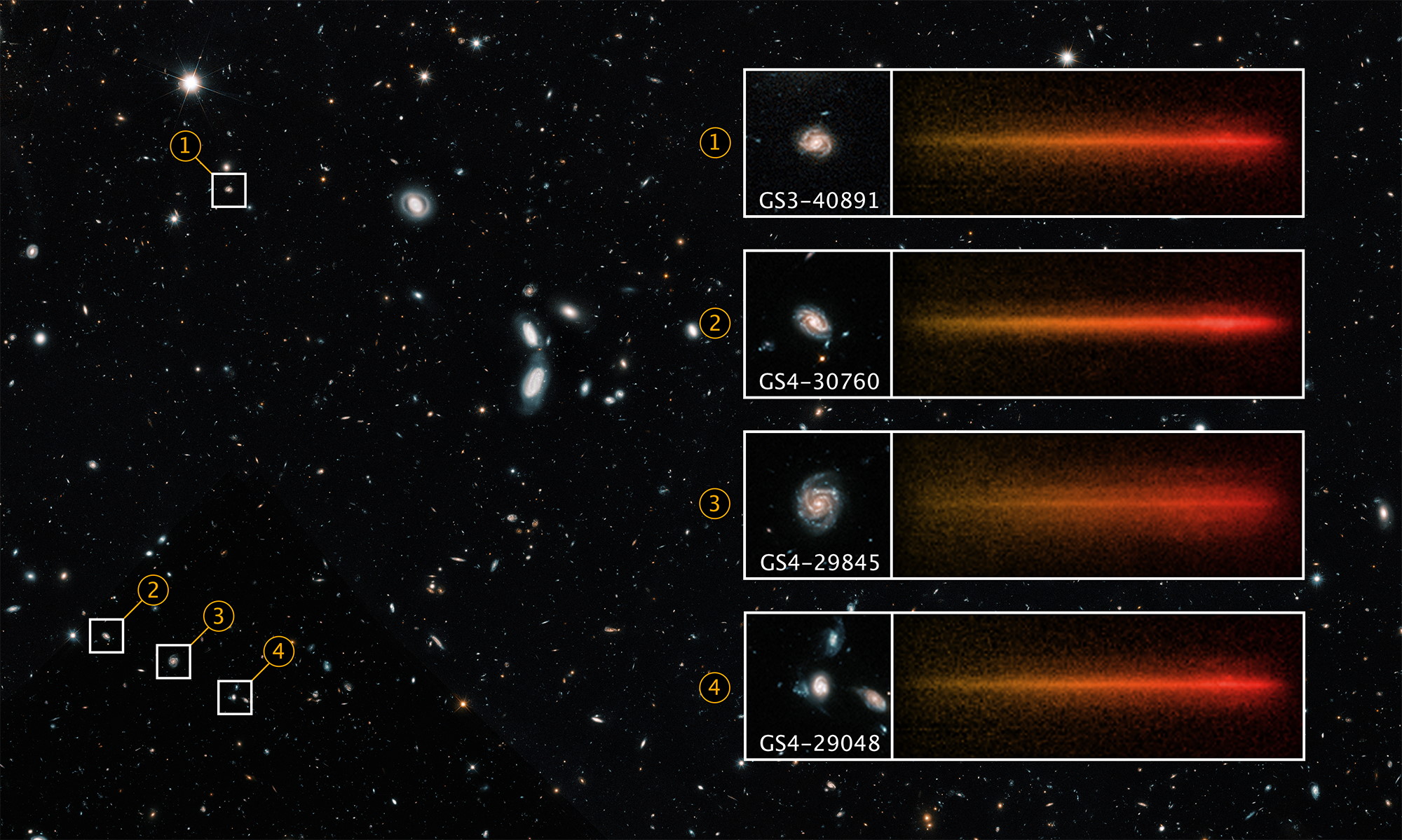
- Since the discovery of dark energy, we’ve recognized that, beyond a certain distance, the galaxies we see can never be reached by us: not via spacecraft, not even via a light signal emitted today.
- Already, by this point in time, all galaxies more distant than 18 billion light-years away, corresponding to 94% of the volume of the Universe, are forever unreachable.
- But as time goes on, more and more of the Universe will disappear from our reach, until only whatever remains of the Local Group is left. Here’s how quickly the Universe is disappearing.
For nearly all of the 20th century, the biggest question over the expanding Universe had to do with understanding what its fate would be. The Universe, if it’s expanding, had to be a race between two seemingly irresistible factors:
- the initial expansion rate, which worked to drive everything existing within the fabric of space mutually apart,
- and the force of gravitation, which fights against the expansion, and works to pull everything back together again.
Ever since the 1920s and 1930s, when the expanding Universe became well-established both theoretically and observationally, the primary quest of cosmology was to measure the present expansion rate as well as how it changed over time. Those two pieces of information, together, would allow us to infer the ultimate fate of the Universe.
Even after the Big Bang became established as our Universe’s beginning, scientists worked to improve these measurements, endeavoring to learn whether our cosmic expansion would eventually reverse and recollapse, whether it would coast and continue to expand forever, or whether it would be right on the border between those two cases. The critical observations at last came in during the 1990s, determining that the answer was none of these options. Instead, the Universe’s expansion is accelerating, implying that a novel form of energy — dark energy — has come to dominate our expansion.
It also implies that the Universe we can observe is disappearing from our reach, and most of it is already gone. Here’s the science of what it means for the inevitable limits of our reach.

At the start of the hot Big Bang, the Universe was rapidly expanding and cooling, while individual clumps within it were also gravitating. Over time, the expansion rate slowed and the temperature dropped, leading to the formation of stable, bound structures for the first time. After about a microsecond had elapsed, protons and neutrons formed. After another few minutes, the first stable atomic nuclei were forged. Hundreds of thousands of years later, neutral atoms came into existence. And after tens to hundreds of millions of years, the first stars and galaxies came into being, all while the expansion rate dropped and dropped.
For the first several billion years of cosmic history, this appeared to be precisely what was going on: the Universe began expanding, but the gravitational effects of matter and radiation worked to pull things back together, slowing the expansion rate down. Objects that were farther and farther away appeared to recede slower and slower as time went on, and the light emitted by once-invisible objects — far beyond the cosmic horizon — finally caught up to us, the observer. More and more of the Universe came into view. And then, about six billion years ago, the matter density dropped by such a significant amount that dark energy’s effects began to become important, and everything changed.

Prior to this moment, if you had put your finger down on any distant galaxy, you would have seen that it receded from us, getting farther and farther away as time went on. However, if you measured its recession speed from us — i.e., how much its light was redshifted by the expansion of the space between that galaxy and ourselves — you would have observed that to decrease with cosmic time. Even as it moved farther away from us, the expansion rate of the Universe dropped by a more significant amount, ensuring that although it still appeared to recede, it was receding slower than it was previously. This allowed the light emitted from objects at even greater distances to “catch up” to us, over time, bringing them into view.
At an age of about 7.8 billion years, however, or about 6 billion years ago, all of that changed. Objects at all distances greater than about 5 million light-years away — i.e., everything beyond the Local Group that’s gravitationally bound to our own galaxy — began receding from us faster than they had been previously. Fewer and fewer new objects would now come into view, as they began accelerating away from us. The objects that were beyond a certain, critical distance would remain visible, but we’d only be able to see the light they emitted in the past, not the light they’re emitting today. Additionally, we’d be unable to reach them, either by spacecraft or with a light signal, even if we sent it right now. Only the closest objects would remain both visible and reachable, creating four distinct regions to our observable Universe.

Based on their present distance from us, today, 13.8 billion years after the Big Bang in the dark energy-dominated era, we can classify the four regions that describe the objects within our Universe.
- Observable and reachable: if an object, at present, is closer than about 18 billion light-years away, we can both see it and reach it. If we sent a signal to a galaxy within this distance, even today, it would be able to reach that galaxy, and if we embarked on a journey to reach that object, we could reach it even at sub-light speeds.
- Observable, but not reachable: if an object is more than 18 billion light-years away, but closer than 46 billion light-years away, it’s still observable by us, but only as it was in the past. It can see us as we were in the past, but we cannot reach it in any way: not by spacecraft and not with a light signal. We are only connected to these objects in the past.
- Observable, but only in the future: if an object is more than 46 billion light-years away, its light will not have reached us yet within the expanding Universe. However, if that object is also closer than 61 billion light-years away, the light it emitted long ago is already on the way, and will reach us at some point in the future. Although we can only see it as it was in the distant past, at some point, it will become visible to us.
- Forever unobservable: and beyond a distance of 61 billion light-years, no object will ever be visible to us or reachable by us.

This is profound, and remains unappreciated by most. Even though 18 billion light-years is 39% of the way to the edge of the observable Universe, a seemingly impressive and substantial number, we live in three spatial dimensions. 39% of the way to the “edge” of the observable Universe, in one dimension, represents only 6% of the volume of the presently observable Universe. In other words, even though there may be between 6 trillion and 20 trillion galaxies contained within the observable Universe, only about 6% of them — the closest 6% — are presently reachable by us. The remaining 94% can only be seen as they were in the past.
There are almost certainly galaxies beyond the limits of our presently observable Universe, as we have every indication that beyond that boundary simply lies more Universe as we know it, but their light hasn’t yet reached us. Although 61 billion light-years isn’t that much larger of a figure than 46 billion light-years, it encapsulates an extra 133% of the volume presently contained in the portion we can see right now. There are more than twice as many galaxies that have never been observed that will someday become visible to our instruments than are in the presently observable Universe today. Even though the Universe keeps on expanding, eventually, that light — although redshifted severely — will catch up to us.

It’s important to remember, however, that this picture provides a mere snapshot of our existence at present. In reality:
- the matter and radiation densities are continuing to drop,
- the dark energy density is remaining constant,
- and the expansion rate, measured in km/s/Mpc, isn’t dropping to zero, but is asymptoting to a positive, finite value.
It’s this last part that’s extremely important. In any expanding Universe in the context of general relativity, there’s a relationship between the rate of expansion (also called the Hubble parameter) at any moment in time, and the square root of the total energy density from all forms: including matter, radiation, and dark energy.
Right now the expansion rate is — depending on which set of measurements you believe is more correct — either 67 km/s/Mpc or 74 km/s/Mpc. This means, for every megaparsec (Mpc, or about 3.26 million light-years) that an object is distant from us, we see it receding from us by either 67 km/s or 74 km/s, meaning that objects that are 10 Mpc away recede at ten times that speed, objects that are 100 Mpc away recede at 100 times that speed, and so on. However, because the expansion rate is dropping, but only to about 82% of its present value, that means in the future, the expansion rate will asymptote to either 55 km/s/Mpc or 60 km/s/Mpc, or somewhere in between if that’s where the true figure lies.
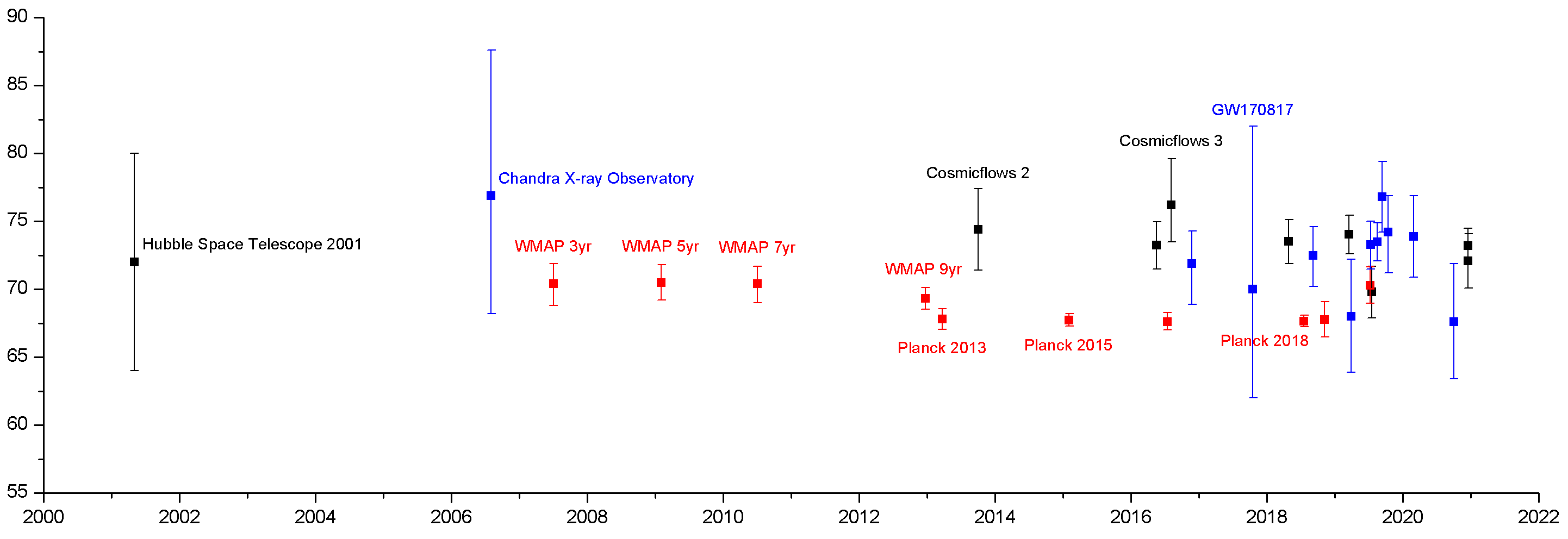
Because of the enduring presence of dark energy, that doesn’t just mean that 94% of the galaxies within the observable Universe have already disappeared to be beyond our reach. It means that the Universe is in the process of disappearing beyond our reach, and that while 94% of them have already crossed that milestone, the other 6% of them — including every single galaxy that isn’t a part of our Local Group — are already in the process of disappearing.
There are about 2 sextillion stars clustered into those trillions of galaxies contained within the observable Universe, but only 6% of them, or around 120 quintillion of them, are presently reachable today. With each new year that elapses, hundreds of millions of additional stars cross over that threshold: from being reachable to being unreachable, corresponding not to a handful of small galaxies, but rather to portions of perhaps hundreds of galaxies: both large and small varieties.
On extremely long cosmic timescales, however, these changes can be tremendous. After another billion years has elapsed, or just ~7% of the present age of the Universe, the percentage of the observable Universe that’s still reachable will have dropped by another enormous step: from 6% to 5%.

That means, just one billion years from now — after the last total solar eclipse has occurred on Earth but perhaps even before the Sun heats up sufficiently to boil our oceans — we will only be able to reach:
- 100 quintillion stars, having lost another 20 quintillion,
- between 300 billion and 1 trillion galaxies, having now lost 95% of the total galaxies in the Universe,
- and the galaxies that are presently located within ~16.7 billion light-years from us, having lost every object presently between 16.7 billion and 18.0 billion light-years away.
We can go a little bit farther if we dare: another 5.2 billion years ahead after that further one billion years. At that point, the Milky Way and Andromeda galaxies will have begun merging, and the Sun should be transitioning into a red giant, where it will swallow Mercury, Venus, and possibly the Earth as well. And at that point, we’ll only be able to reach fewer than 2% (about 1.75%) of the stars and galaxies within our presently-observable Universe: corresponding to just 35 quintillion stars and between 105-350 billion galaxies. In the meantime, what we presently call Laniakea — our local supercluster — will have already begun visibly dissociating into its component groups and clusters, being driven apart by dark energy.

It isn’t just the most remote galaxies that expand away from us, being driven to greater and greater distances by dark energy; it’s every galaxy that isn’t gravitationally bound in the same group or cluster as our own. After roughly 63 billion years have passed by, all ~100,000 galaxies that compose what is known as Laniakea today will be the only galaxies that are reachable by someone living in the Local Group. There will be around 100 quadrillion stars inside these galaxies, but many mergers will have occurred, leaving the number of galaxies a much smaller number than are present within Laniakea today.
Over the following few billion years, the large clusters within Laniakea, things like Norma, Centaurus, Hydra, and Fornax, will recede beyond the reachability limit. The great Virgo cluster of galaxies, only ~55 million light-years away at present and consisting of over 1000 member galaxies, will become unreachable just before we reach the 100 billion year milestone after the Big Bang. And what are presently the closest galaxy groups outside of the Local Group — objects like the M81 group — will be the last to become unreachable: something that won’t occur until more than 110 billion years from now, when the Universe is nearly ten times its present age.
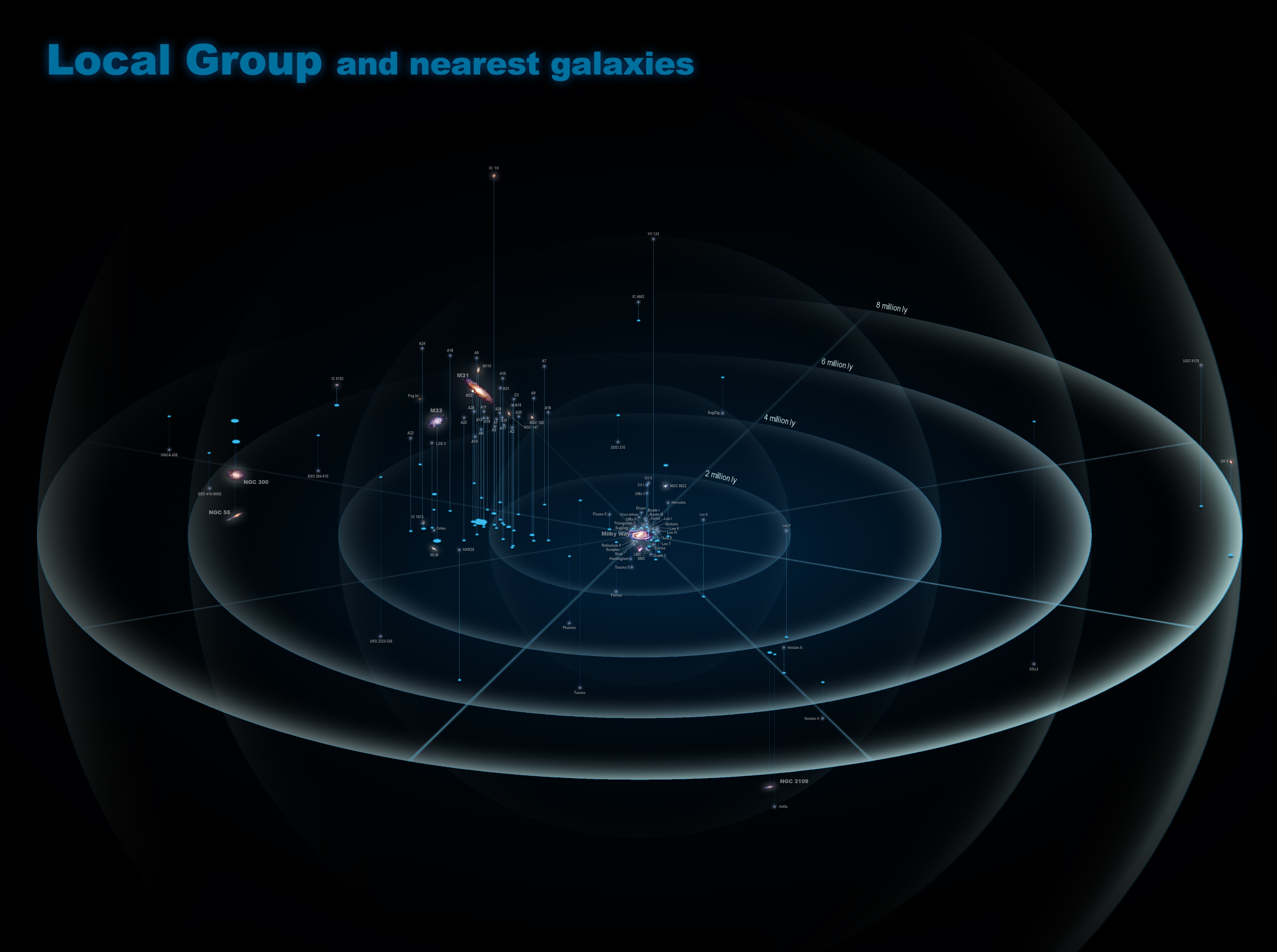
Nearly 100 years ago, we began collecting the first evidence for the expanding Universe, and with it, the first evidence of our cosmic origins: the original notion of the Big Bang. Once we began seeing very far back in cosmic history — not just millions or hundreds of millions of years back in time, but several billion years — we began to investigate not only our cosmic origins, but our cosmic fate as well. And what we found, to the surprise of many, was that our Universe couldn’t be made up just of matter and radiation, or even primarily of matter and radiation, but rather was dominated by a mysterious form of energy that was driving all gravitationally unbound structures apart: dark energy.
Dark energy doesn’t just determine the fate of the Universe, it also determines the distance and time scales on which galaxies, galaxy groups, and galaxy clusters would all fly apart from one another. Today, 13.8 billion years after the Big Bang, we can see up to 46 billion light-years away, but only 6% of the volume of our observable Universe can be reached by us. As time continues to progress forward, the amount of the visible Universe that we can see will continue to increase, but the galaxies within the portion of the Universe that’s reachable will continue to decrease, as they all move farther and farther away from one another.
At last, after another 112 billion years pass by, the final galaxies beyond our Local Group, representing the closest galaxies to our own Local Group today, will finally recede beyond the reachability limit, receding too fast for even light to catch up to it. After all that time, only our Local Group of galaxies, likely having merged together into a single, central behemoth, will be the last thing within our cosmic reach.
